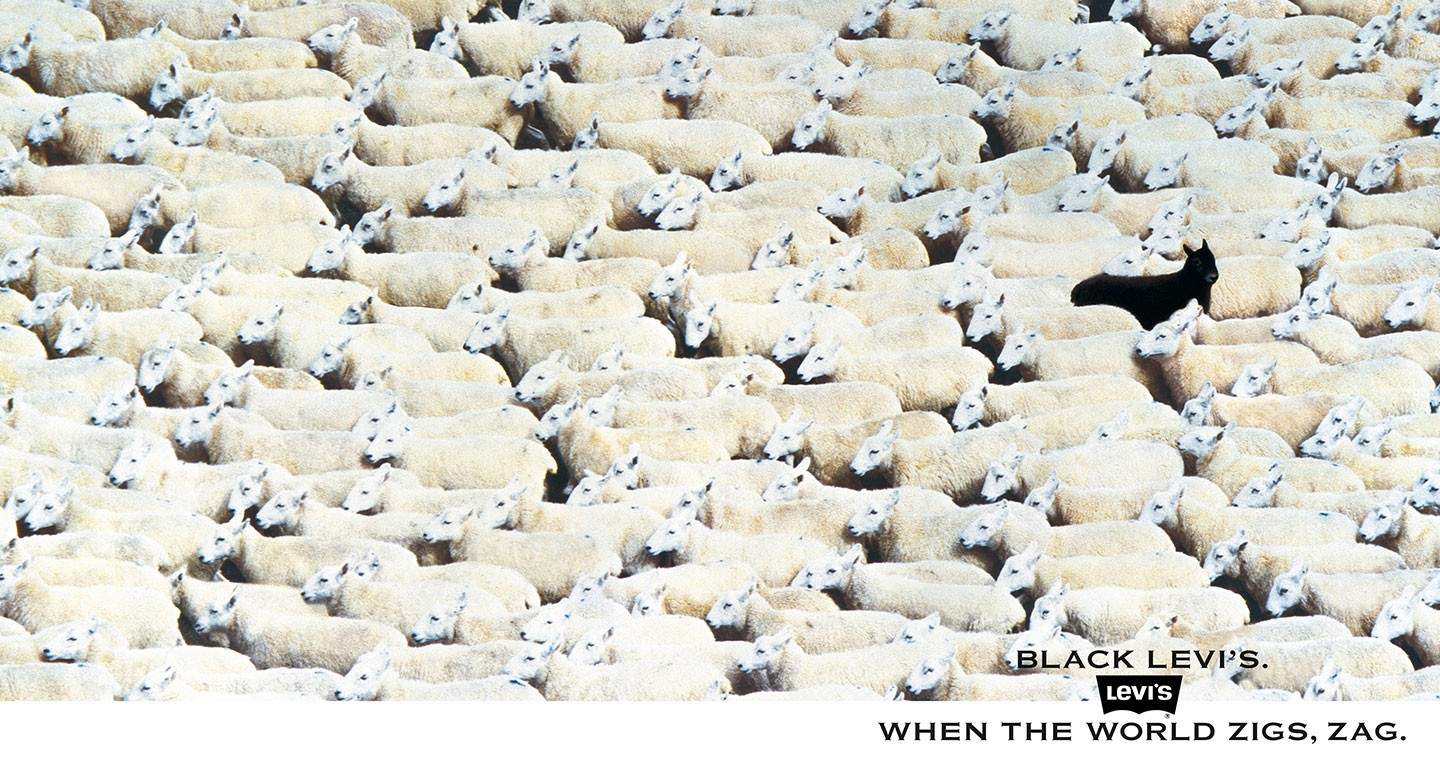SINGAPORE – Charles Wigley, Chairman of BBH Asia shared 100 lessons he has learned over his career as an advertising planner.
Wigley joined BBH as one it’s first graduate recruits over thirty years ago. Starting as an account planner in January 1987 in the BBH London flagship office in London’s vibrant hub of creativity in Soho. Bartle Bogle Hegarty, BBH’s mantra is “When the world zigs, zag”, they call it “zagging” is legendary, one of the most creative agencies on the planet from their days creating award-winning campaigns for Levi’s, an account they held for 28 years. The agency’s Black Sheep logo a symbol that no one size fits all.
Wigley’s bio reads, “Due to his unsuitability to employment elsewhere he remains there (BBH) to this day albeit having had a nine year sojourn working in Hong Kong (Bates) and Australia (Principals). A holder of a Geography MA from Cambridge Charles has applied his cartographic skills to finding the offices of clients all over the world. He was one of the creators of James Squire beer – now one of Australia’s premier beers, the winner of a Cannes Gold Lion for ‘Sperm donor clinic’ for the Economist in the UK and as a long time planner the author of strategies for brands of every stripe.”
Here are Charles Wigley’s lockdown jottings 100 THINGS A PLANNER SHOULD KNOW, a treasure trove, which he remarked, “Only took me about 3 hours and 30 years to write” –
- Your definition of a problem is likely to be more important than your definition of the answer
- PowerPoint is important, but it’s not everything
- Get out of the office – if you are not ‘bringing the outside in’ what is your role ?
- If it answers the problem brilliantly but doesn’t follow your strategy, that’s not an issue
- You are in advertising, nobody cares about advertising. Feel free to write this on your laptop. It will help your work
- Actions speak louder than words, but actions are harder, so clients keep asking for ads. Keep pushing them for actions anyway. They will thank you in the end. Maybe
- Dull words and clever thinking are far more useful than clever words and dull thinking. Thank you Dave Trott
- The objective is always right and fresh. One without the other is inefficient
- Don’t be too fast to criticise – it’s little bits of somebody up there on that wall
- If you expect creative people to present you with multiple options then you should be ready to write multiple strategies to tackle the problem
- There are many ways to crack a nut
- Being fashionable is different from being right
- To understand people you need to see the world through their eyes. That means empathising with them. That’s your job
- Working out what the real task is for a client will save you time – just package what they have already, or re-formulate the contents of the package itself ?
- You will be drawn into the black hole of conformity without even knowing it. Start projects with a competitive review
- Involve your clients early in the process and frequently. If they’ve been involved they are far more likely to buy
- You are the path finder not the pilot
- There is nothing wrong with repetition, people need to get the message
- There is nothing wrong with repetition, people need to get the message
- Agencies are perfectly capable of doing ads without you, it’s salutary not to forget that
- Don’t make the briefing the big reveal – everyone in the room should already have a pretty clear idea on where you are taking them, because you will already have talked to them….
- You are not the only one who can contribute to strategy
- Don’t ever say ‘this brief is about starting a movement’. You will look like a fool for vastly over estimating the power of what we do
- Everyone has access to the same consumers, but not the same brand
- Search for clues everywhere – the consumer of course, but also the company, the product, the brand, the category, the zeitgeist
- Get the key measurements in place for tracking at the start of the process, not 10 days before the effectiveness paper is due
- Pre – testing work is a conservative fool’s paradise. Most Australians hated the Sydney Opera House when it was built. ‘A carbuncle on the harbour’. Now it’s on their stamps
- When you are starting out your knowledge is far more important than your point of view. People might be interested in what you have found out, but they certainly won’t give two hoots about your point of view. This is as it should be. First focus on knowledge
- Be very clear on what the role of advertising is, what it’s meant to achieve. Without this it’s difficult to judge anything
- Some people lead. Some people follow. Part of your job is to talk more to the former than the later
- Remember that culture dramatically affects how people see the world. The norms of early family and school life are key. Just because two teens at either end of the world wear the same brands doesn’t mean they’ll think the same. Read Geert Hofstede. Read Richard Nisbett
- The world is not becoming more ‘Westernised’
- Culture tends to layer rather than replace
- We all see the world through our own ‘cultural lenses’ – we just don’t know we are wearing them. Thank you Geert Hoftsede
- Think unprofessionally when you look at creative work. You are no longer an ad exec. You are just someone walking down the street or thumbing through a feed. You don’t care. What will stop you ?
- Never present an ad you would be unhappy to make. Clients are quite within their rights to buy whatever you present. Soft options inevitably lead to soft work
- Three points are better than four. Five than Six. It’s just an odd numbers thing. Trust me
- Don’t try and do everything half well. Do a few things brilliantly. Consumers might notice then
- Strategy should be simple. Don’t pretend otherwise. Yes your mother should get it. In the seconds we have to work with we don’t have any choice
- Advertising in its current forms may well be a declining force, but brands and creativity won’t be. Know where your future lies
- Don’t whinge about change in our business. I have wasted too much time doing that. Capitalism doesn’t care. It just reaches out for the most powerful tools and uses them. It has no love for ‘our craft’. It’s heartless
- Worry enough to be good. Everyone needs to worry a bit. But not so much as to break yourself
- When you are young you are good at the zeitgeist and poor at the big picture. When you are old it’s the other way round. Make the most of what you have at each stage
- Remember that most of the world doesn’t think like you
- Be a radiator not a drain at work. Yes it’s jargon, but it’s also true
- You don’t know everything
- Understand your client’s definition of creativity – it may be very different from your own. Thank you Paul Arden
- Don’t try and knock it out of the park with the first campaign for a new client – it rarely happens. But make sure you put in place the foundations for future greatness
- Most things aren’t black and white. They are shades of grey. Not the sex novel
- Don’t worry about an element of chaos in the process. You need it for creativity. And most case studies are just chaos post rationalised
- Be honest
- Simple wins
- Don’t be rude to clients. Don’t be a creep either. Be someone they respect because you can help them get it right
- Listen to clients. They may have an important point even if they are poor at expressing it
- There is a difference between what people say they do and what they actually do. Observe them to find out the truth
- Give your brand a north star. It doesn’t have to be worthy and it will give everyone something to aim for
- Don’t lead the brands in your care down the path of pretending to be something they are not. They will be found out. Saviours of the world or uncaring capitalists ? Be honest
- People’s purported values often clash with the prices they are willing to pay
- Work ahead of the rest of the agency team .Yes collaboration is good, but ultimately you are the start of the process. Start Sunday night and then feel free to leave early for the pub on Friday afternoon
- People are not going to go out of their way to ‘interact’ with your ad. Ever
- Read Byron Sharp, Al and Laura Ries, Jack Trout, Michael Porter, Binet and Field. You need the foundations of our world
- Read Bob Hoffman, Dave Trott, Peter Mayle. You need to be able to laugh at our industry and yourself
- Just read
- If the brands you work on don’t stand for something, they’ll stand for nothing. And nothing is neither memorable or motivating
- Have fun with what’s going on day to day. Tactical ads are some of the most powerful. Be alert. Advertising needs lerts. Boom boom
- You won’t instinctively feel what’s right for a brand until you’ve worked on it for a year or two
- Ads ( and briefs and everything really ) only need to be three things – true, distinctive, motivating. Thank you Heather Alderson
- Consider the bigger historical picture. The past, present and future of the category. Where are you positioning the brand on this continuum ?
- Go too early on a trend and it’ll break over the top of you. Too late and it will roll right under you. Timing is everything dude
- Three fundamental questions to any brief : 1. Brand share or market growth ? 2. Current or new users ? 3. Brand or product start point ? Thank you Dave Trott
- If it isn’t interesting to you it’s unlikely it will be to anyone else
- People inside a client company should be as excited ( if not more so ) by the work as consumers outside. Make them your advocates
- Your biggest opportunities will be on the dullest things. Everyone wants to work on the cool sports brand and no one on the boring bank brand. But actually the sports brand is already all worked out and that bank brand is tabula rasa. Don’t be a fashionable sheep
- With experience you will know when the needle is in the groove strategy wise. And when it’s not
- The world is too full of average communications for brands. Don’t add to the ‘cultural landfill’. Thank you David Golding
- In a world of bullshit telling it ‘straight’ is remarkably powerful. A ( very ) grudging thanks to ‘The Donald’
- Don’t ever look down on your target audience. It doesn’t help you in your job and they have their reasons for their world view just as much as you do for yours
- A prophet is always from out of town. The further a brand travels from home the more permission it has to be premium. Heineken is just cheap lager in Holland
- Ambition coupled with constraint is the greatest ally of creative thinking. Thank you Adam Morgan
- What the brand architecture of your client company is and why. A branded house or house of brands ? Or a hybrid in between ? And does your work fit well with this ?
- When you finally make it to ‘the top’ do not rewrite the creative brief. No one cares, it’s the discussions not the paperwork that count and briefing forms are all pretty much the same anyway
- As much as you know what the brand is for, know what it stands against
- Don’t believe the hype. Always ask for the numbers
- What your target’s consumer journey is. And don’t just be interested in doing the ‘surprise and delight’ bits. It all counts. The dull bits often the most
- The what they do, how they do it and why they do it of your clients brand. If they don’t know it help them work it out. See Simon Sinek
- The importance of codifying the brand for future generations. Take charge of the brand book
- If you follow just one model you will have just one set of answers
- If it’s already best practice then lots of other people are already doing it
- Your brain, like everyone else’s, isn’t designed to be creative. It is a pattern recognition and classification machine. You will often need to consciously jog it out of this mode to do anything fresh
- Different mediums are processed by the brain differently. The written word is lean forward, actively processed and logical. Moving images are lean back, passively processed and emotional. Which is why different mediums are good at different things. Words = think. Images = feel. Thank you Robert Heath ( with a nod to Krugman )
- You need to sell both now and in the future. This is retail vs brand. Getting the balance right is important. See Binet and Field
- Coke got it right. The ideal brand is both top of mind and physically easily available. Make things well known and easy to buy. See Byron Sharp
- The real battle is in reach and penetration not loyalty and frequency. See Sharp again
- The simplest brief : GET ( audience and problem ) – TO ( action you require ) – BY ( your strategy here )
- The simplest brand purpose : AT ( company X ) WE BELIEVE ( values / purpose Y ) THAT’S WHY WE DO ( action Z )
- Walk away. You need space and time to see if your answer is good or bullshit
- Walk in general. Walking is like taking a shower. It frees the mind
- Stealing from other worlds of human endeavour is likely to lead to far fresher thinking than stealing from other advertising case studies
- Really thinking differently is disliked intensely at the start. Don’t believe the glossy hindsight of Apple ads. Those people were hated. And in our small fishpond I bet you hate Vayner media too
- If you give it all away you’ll find more will come back to you
“With thanks to the account men – John Hadfield, Arto Hampartsoumian, Arvind Krishna, Sid Tuli – who badgered me into writing this down. It very much helps to have good account people. That’s the 101st thing you should know.” – Chaz Wigley










